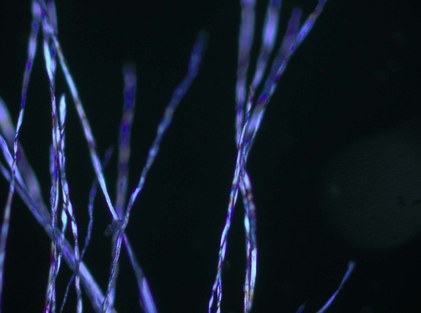Forensic Analysis
Forensic Analysis of Textile Fibres
When investigating criminal acts, traces of textiles can deliver important information to the police and judicial authorities. Examples are fibre transfer, prints of textile structures on other materials, damage to materials, etc.
This particular research can be divided into four steps:
- Collecting of evidence
- Visual observation
- Chemical analysis
- Mechanical analysis
It is important to collect all forms of evidence, including traces of textiles, as soon as possible after the crime took place, since contamination with other fibres can also occur after the crime.
During the first visual examination, the evidence is investigated as to structure, colour, stains, damage etc. Based on this, fibre traces are identified, onto which microscopic, chemical and/or mechanical analyses will be performed.
The chemical composition is determined with a combination of microscopy, melting point determination procedures, infrared/raman measurements and solubility tests. The choice of the most appropriate technique depends on the base material and the amount of material available. Comparing colours and used dyes can also be of vital importance in forensic investigations.
From a mechanical point of view, the structure of the material is examined: fineness, twist, the yarn’s spinning method or the weave of the fabric or knit.
A lot of know-how is required to successfully undertake forensic fibre analysis. It was an obvious choice to put the department’s textile and fibre knowledge at the disposal of police and judicial authorities by joining Ghent University’s multidisciplinary forensic institute with our ‘Forensic Fibre Research’ group. www.fiugent.be
Contact: Johanna Louwagie

Microscopic image of cotton fibres under polarised light.